Student breakfasts in Finland – by UTU ambassadors
Breakfast is one of those things that is simultaneously universal and intensely personal. Although our lunches and dinners have become increasingly multicultural in recent decades, breakfast habits have been slower to change. There is something comforting about starting your day with the same kind of food you have eaten since you were a child, something natural about eating breakfast at your “normal” time and in your “normal” way. In this blog post, I will share what student breakfasts look like in Finland.
For some, breakfast is a leisurely affair, a chance to connect with family or enjoy half an hour of peace before transitioning to the business of the day. For others, it’s a much more utilitarian matter – a quick meal after waking up, with the sole purpose of fuelling you through the morning. Some people skip breakfast altogether, or just drink a coffee, or eat breakfast in the middle of the morning after a few hours of work. (If you’re in Poland, you’re allowed to indulge your inner hobbit and eat both breakfast and second breakfast every day!)
Because breakfast is such a personal meal, asking people how they do breakfast can be a great way to find out about their culture as well as their food preferences. I decided to ask some of my fellow ambassadors what they eat for breakfast here in Turku, and to share their answers with you in this blog post. I hope this will give you a window into our daily lives, as well as some useful information about what food is available in Turku and how much it costs.
Student breakfasts: Me, from South Africa
Let’s start with me. In the course of researching this blog post, I have discovered that my breakfast is simpler and much less Instagrammable than the breakfasts of my fellow ambassadors, so the photos and food will only get more enticing after this! But I digress…

What do you eat for breakfast? My go-to breakfast is oats. I usually cook oat porridge on the stove and stir in some raisins and cinnamon before putting it into a bowl. Sometimes I’ll pour a little bit of milk over top, too. Cooking oats takes less than 10 minutes, but if I know I’ll be in a hurry in the morning I might prepare overnight oats – to do this, I put equal quantities of oat flakes and milk in a bowl with some raisins and cinnamon, and leave it in the fridge overnight. The oats absorb the liquid and by the morning they are ready to eat.
Have your breakfasts changed since you moved to Finland? Not really. I grew up eating oat porridge occasionally, but started eating regularly after I moved out of home. It’s cheap and it keeps you full for a long time! Luckily, oats are also easily available and very affordable in Finland. The only difference is that if it’s berry season, I might swap the raisins for blueberries I picked in the forest and replace the cinnamon with ginger.
How much does this meal cost you to make? Stovetop oats with cinnamon and raisins costs 0.18€ per serving, or 0.23€ if I add milk. Overnight oats require more milk and so cost a bit more, at 0.33€ per serving.
Student breakfasts: Fadwa, from Morocco
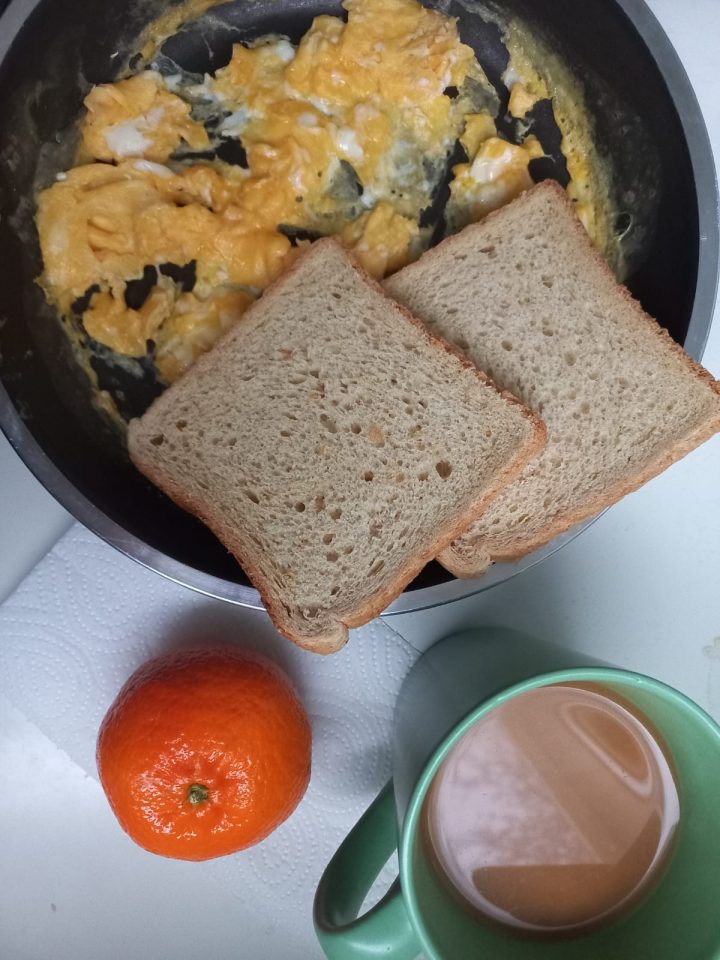
What do you eat for breakfast? I usually have coffee, scrambled eggs, two slices of bread, and fruit – something like a clementine, kiwi, etc.
Is this the same breakfast that you would eat in Morocco? Yes. It hasn’t changed much from when I was at home.
How much does this meal cost you to make? Around 2.50€, maybe less.
Student breakfasts: Anna, from Russia
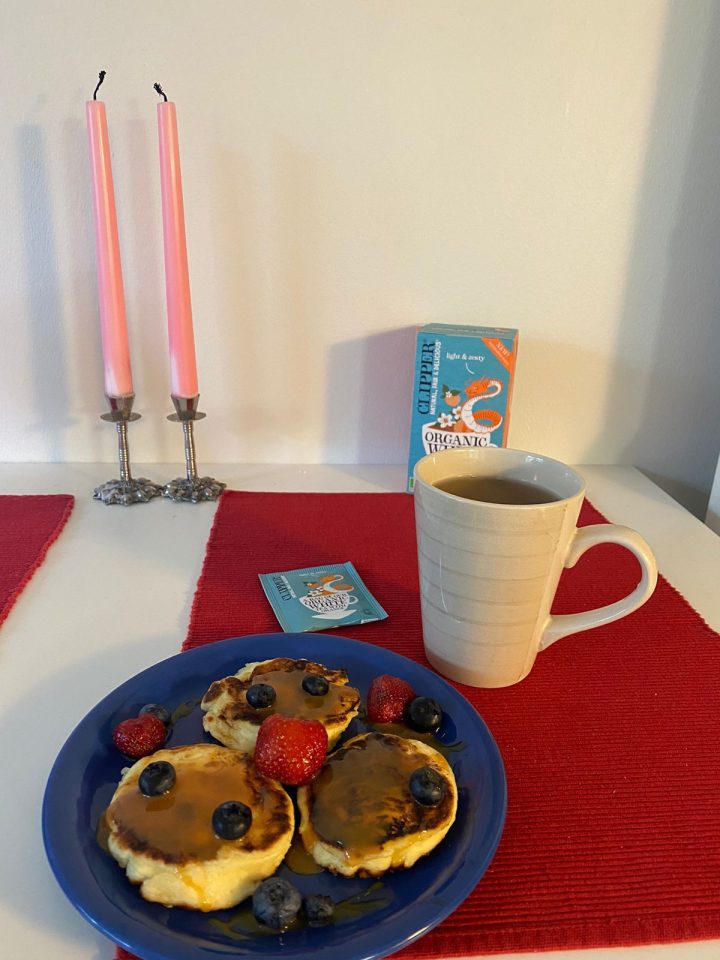
What do you eat for breakfast? I like to have oladji for breakfast when I have enough time to make them. It’s one of the variations of Russian-style pancakes. It has been one of my favourite breakfasts since I was a child.
Have your breakfasts changed since you moved to Finland? When I moved to Finland I didn’t have to substitute any ingredients as luckily I could find everything I need in the local supermarkets. It doesn’t change much in different seasons, but during the summer I can add some berries on top, while in wintertime I prefer to add frozen raspberries right into the dough. Also, during autumn you can pick blueberries in the forests in Turku.
How much does this meal cost you to make? I think the costs vary from 1€ to 1.50€ depending on the ingredients.
Student breakfasts: Yuka, from Japan
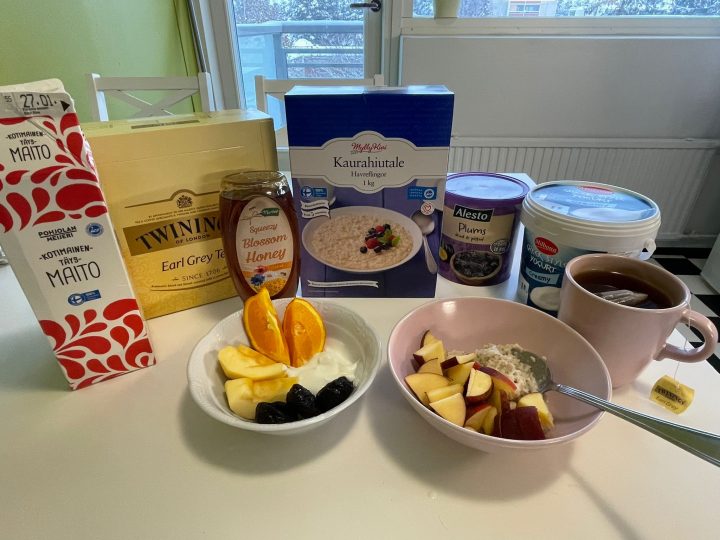
What do you eat for breakfast? In the white bowl: sliced apples, sliced oranges, Greek yoghurt, prunes. In the pink bowl: porridge with honey and sliced apples. In the mug: Earl Grey tea.
Have your breakfasts changed since you moved to Finland? I always preferred eating cereal for breakfast, but ever since I had my first bowl of porridge at a cottage with some friends I made here, I’ve been into porridge and overnight oats. Just recently, I discovered that lingonberry jam goes well with yoghurt and porridge, so I try to incorporate it in my breakfast and enjoy a bit of “Finnishness” 🙂 I love to eat fruit in the morning as well, and usually it’s whatever fruit is on sale at the supermarket, changing according to the season!
How much does this meal cost you to make? My breakfast costs around 2€.
Student breakfasts: Polychronis, from Greece
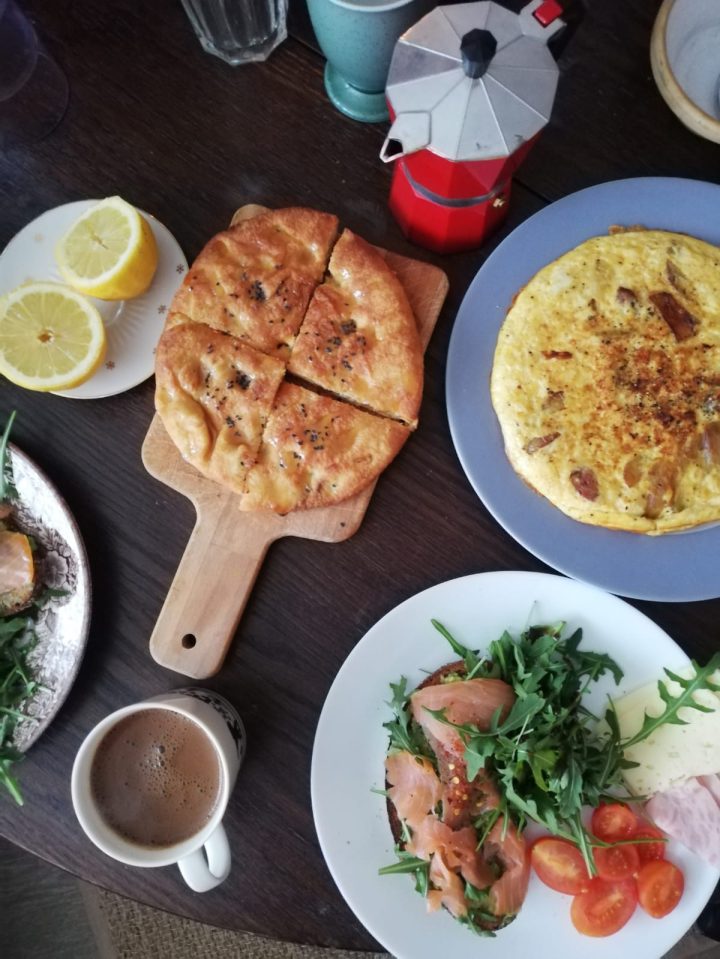
What do you eat for breakfast? I mostly make a proper breakfast or brunch on days when I go to the lab late, or when it’s the weekend. In the picture you can see bread (I don’t know if it’s rye bread, but it’s a bit sour) with mashed avocado, topped with arugula and salmon, and some chilli flakes from Greece. The one that looks like an omelette is called furtalia, and it’s a dish I first discovered when I was on vacation in Tinos island. It’s an omelette with potatoes and Greek sausage.
On the left is a myzithra pie (myzithra is a type of Greek cheese) – I actually got focaccia dough and filled it up with the cheese and then pan fried it. I topped it with honey and black sesame seeds. The coffee in the mug is Greek coffee, and the moka pot is for the Italian espresso. Unfortunately I can’t find the exact same coffee here, but I experiment a bit.
Is this different to what you would eat for breakfast at home in Greece? In Greece I would most likely eat halva made from semolina and maybe a toast. And always coffee, but not necessarily Greek coffee. It’s super strange that I want to eat Greek stuff here which is difficult to find, but I didn’t actually care for it back in Greece. Also, here I get to cook way more than in Greece when I am staying with my parents.
How much does this meal cost you to make? I would say it is around 8€ or so, because most of us will already have eggs, potatoes, bread, cheese, etc. The expensive ingredients were the salmon, the sausage and the dough.
Student breakfasts: Olha, from Ukraine
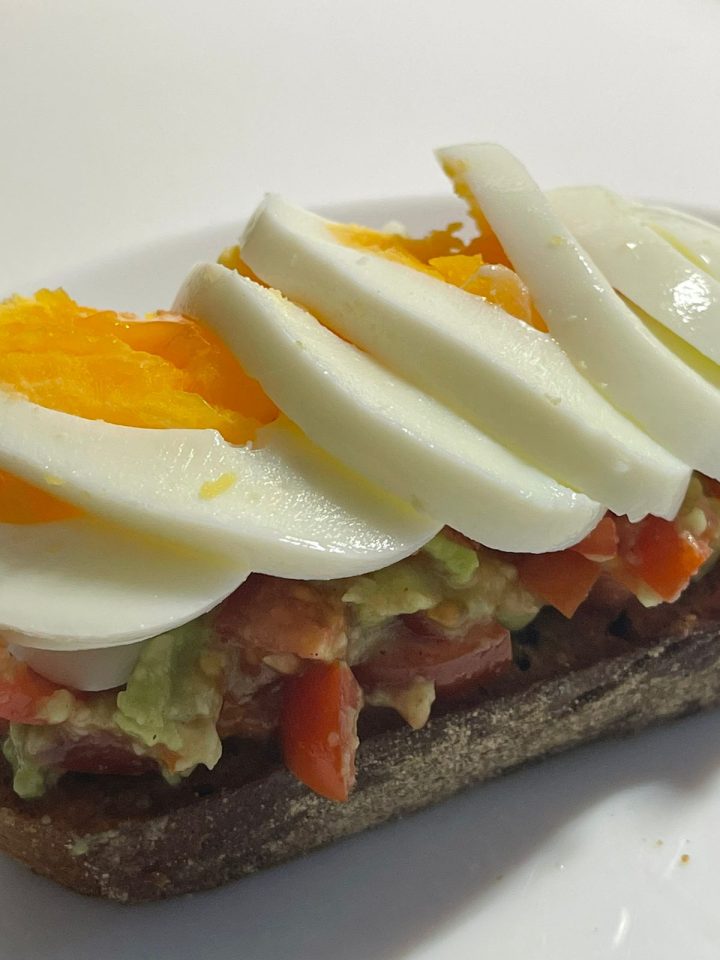
What do you eat for breakfast? For me, breakfast is a super important part of the day. That’s why I like to spend some time cooking something delicious but at the same time healthy. This might be different sandwiches, oatmeal with fresh berries and honey, cottage cheese casserole and so much more. But my favourite one is avocado toast. It is extremely easy to make – you just need tasty bread, ready-to-eat avocado, tomatoes and boiled egg. That’s it. Easy, healthy, tasty!
How much does this meal cost you to make? Approximately 2€, depending on the avocados and tomatoes that you choose.
Student breakfasts: Hilyah, from Indonesia

What do you eat for breakfast? I don’t usually have breakfast, unless it’s the weekend. The first picture shows berry pancakes, with frozen mixed berries and looaads of maple syrup! The second picture shows a breakfast wrap with a homemade “tortilla”, tomatoes, scrambled eggs and halal chicken sausages. And of course with a cup of tea – you can see my little tea collection in the background.
Have your breakfasts changed since you moved away from Indonesia? These are not typical Indonesian breakfasts, as those are quite heavy – things like nasi uduk (coconut rice) with an assortment of tofu, egg, fried chicken, tempeh, sambal, etc. I don’t have time to make that in the morning! And even in Indonesia, people would usually buy it at their local nasi uduk bistro.
How much do these meals cost you to make? A stack of three berry pancakes with syrup costs roughly 2€, and the breakfast wrap meal costs roughly 3€.
And that’s a (breakfast) wrap! I hope you’ve enjoyed finding out more about what fuels the ambassadors as they go about their daily life. If this blog post has piqued your interest in Finnish food culture, you can find out more with this mouthwatering overview of Finnish cuisine.
If you’ve decided that you’d like to come to Finland yourself, check out our international degree programmes. Bon appétit – or as they say in Finnish, hyvää ruokahalua!
Chat with our current students
Post inspired by beeinfinland.wordpress.com
Last updated: 29 July 2022
Search similar blog posts by categories and keywords:
